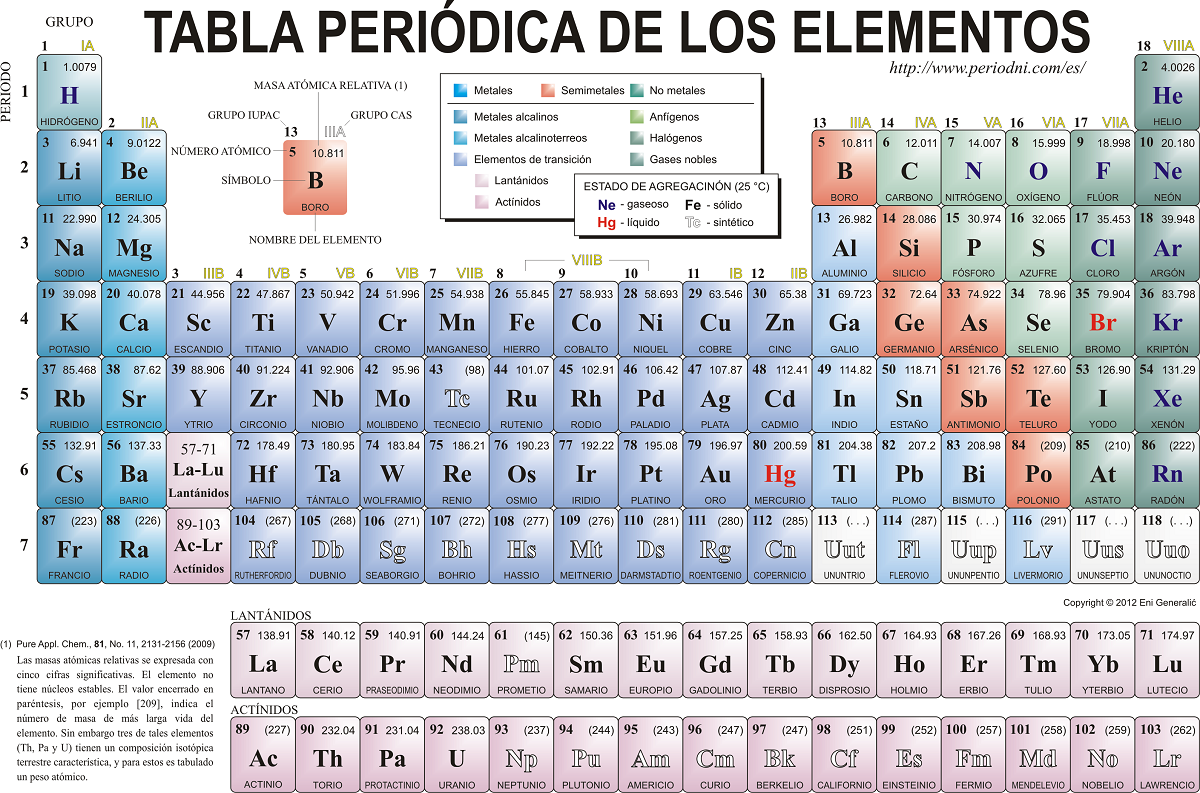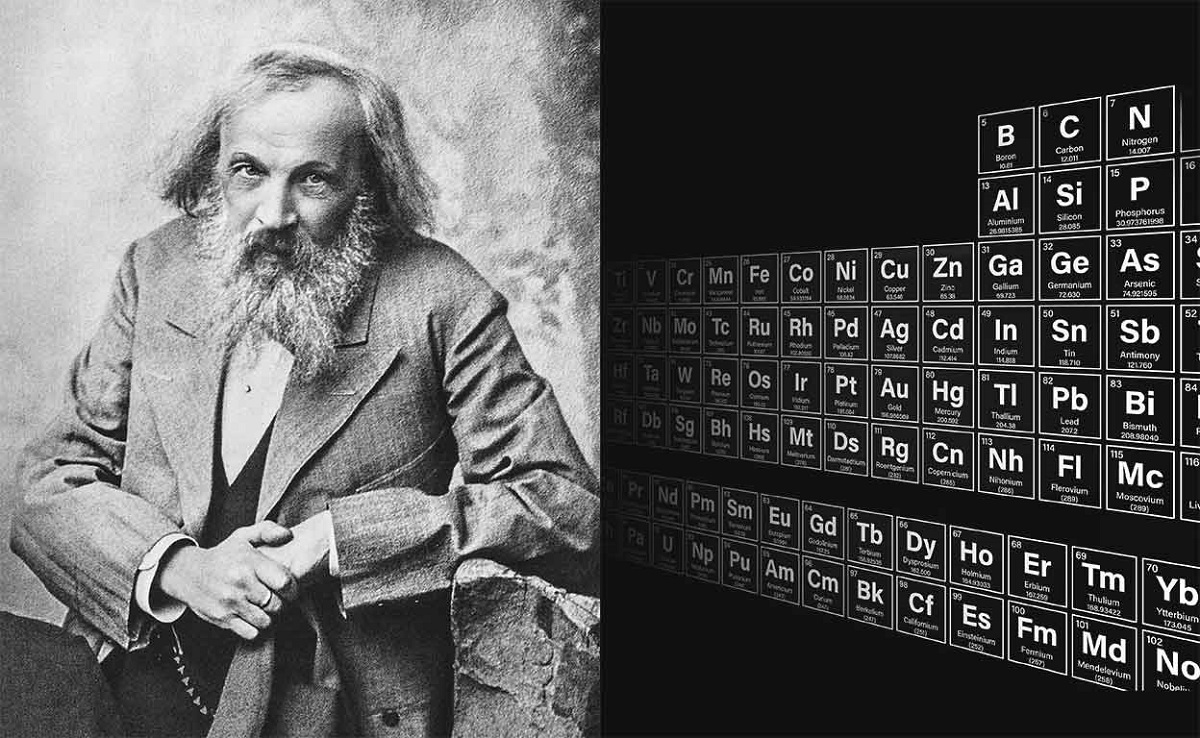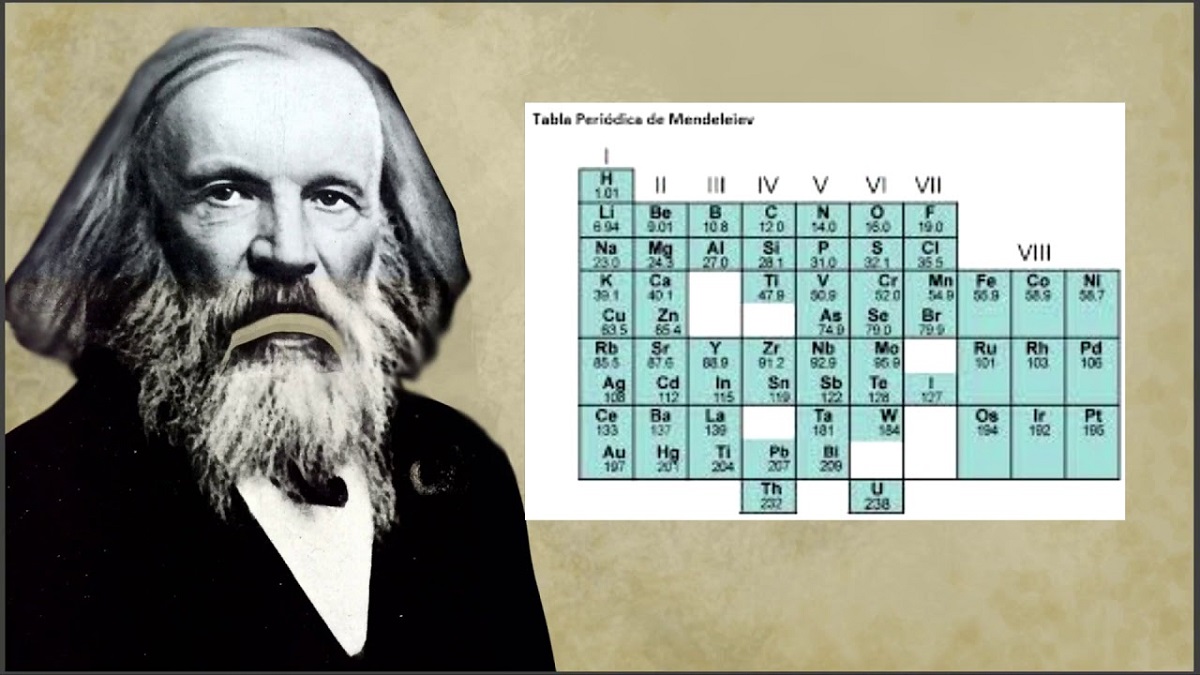
The periodic table is a graphical and conceptual tool that organizes all the chemical elements known to man according to their atomic number (that is, the number of protons in the nucleus) and other fundamental chemical properties. Many people do not know well the origin of the periodic table.
Therefore, we are going to tell you about the origin of the periodic table, its history and the importance it has for chemistry.
Origin of the periodic table

The first version of this conceptual model was published in Germany in 1869 by the Russian-born chemist Dimitri Mendeleev (1834-1907), who discovered a recognizable scheme to help categorize and organize them graphically. Its name comes from Mendeleev's hypothesis that the atomic weight determines the periodic properties of the elements.
The first periodic table of elements arranged the 63 elements discovered at that time in six columns, which is generally accepted and respected by scholars of this discipline. It is considered the first attempt to systematize the elements proposed by Antoine Lavoisier, or André-Emile Bégueille de Champs Courtois Significant improvement over the first tables created by Béguyer de Chancourtois (an "terrestrial propeller") in 1862 and Julius Lothar Meyer in 1864.
In addition to creating the periodic table, Mendeleev used it as a tool to deduce the inevitable existence of elements yet to be discovered, a prediction that was later fulfilled when many of the elements that filled the gaps in his table began to be discovered.
Since then, however, the periodic table has been reinvented and restated several times, expanding on the atoms discovered or synthesized later. Mendeleev himself created a second version in 1871. The current structure was devised by the Swiss chemist Alfred Werner (1866-1919) from the original table, and the design of the standard figure is attributed to the American chemist Horace Groves Deming.
A new version of the table, proposed by the Costa Rican Gil Chaverri (1921-2005), takes into account the electronic structures of elements rather than their proton numbers. The current acceptance of the traditional version, however, is absolute.
History of the periodic table

In the XNUMXth century, chemists began to classify the known elements based on their similarity in physical and chemical properties. The end of these studies produced the modern periodic table of elements as we know it.
Between 1817 and 1829, the German chemist Johan Dobereiner grouped some elements into groups of three, called triplets, because they shared similar chemical properties. For example, in the chlorine (Cl), bromine (Br), and iodine (I) triplet, you noticed that the atomic mass of Br was very close to the average mass of Cl and I. Unfortunately, not all elements are classified in triplets. and his efforts failed to arrive at a classification of elements.
In 1863, the British chemist John Newlands divided the elements into groups and proposed the law of octaves, consisting of elements of increasing atomic mass in which certain properties are repeated every 8 elements.
In 1869, the Russian chemist Dmitri Mendeleev published his first periodic table, listing the elements in order of increasing atomic mass. At the same time, the German chemist Lothar Meyer published his own periodic table, in which the elements were arranged from least to greatest atomic mass. Mendeleev arranged their tables in horizontal arrangements, leaving blank spaces where they had to add something yet to be discovered. Within the organization, Mendeleev envisioned a distinct pattern: elements with similar chemical properties appear at regular (or periodic) intervals in vertical columns on a table. After the discovery of gallium (Ga), scandium (Sc) and germanium (Ge) between 1874 and 1885, Mendeleev's predictions were supported by placing them in those gaps, which made his periodic table a world that has gained more value and acceptance.
In 1913, British chemist Henry Moseley determined the nuclear charge (atomic number) of the elements through X-ray studies and regrouped them in order of increasing atomic number as we know them today.
What are the groups of the periodic table of elements?
In chemistry, a periodic table group is a column of constituent elements, corresponding to a group of chemical elements with many atomic characteristics. In fact, the main function of the periodic table, created by the Russian chemist Dmitri Mendeleev (1834-1907), was precisely to serve as a diagram to classify and organize the different groups of known chemical elements, for which its population is one of its most important components.
The groups are represented in the columns of the table, while the rows form the periods. There are 18 different groups, numbered from 1 to 18, each of which contains a variable number of chemical elements. Each group of elements has the same number of electrons in their last atomic shell, which is why they have similar chemical properties, since the chemical properties of chemical elements are closely related to the electrons located in the last atomic shell.
The numbering of the different groups in the table is currently established by the International Union of Pure and Applied Chemistry (IUPAC) and corresponds to Arabic numbers (1, 2, 3...18) replacing the traditional European method that used Roman numerals and letters. (IA, IIA, IIIA…VIIIA) and the American method also use Roman numerals and letters, but in a different arrangement than the European method.
- IUPAC. 1, 2, 3, 4, 5, 6, 7, 8, 9, 10, 11, 12, 13, 14, 15, 16, 17, 18, XNUMX.
- European system. IA, IIA, IIIA, IVA, VA, VIA, VIIA, VIIIA, VIIIA, VIIIA, IB, IIB, IIIB, IVB, VB, VIB, VIIB, VIIIB.
- American system. IA, IIA, IIIB, IVB, VB, VIB, VIIB, VIIIB, VIIIB, VIIIB, IB, IIB, IIIA, IVA, VA, VIA, VIIA, VIIIA.
In this way, each element that appears in the periodic table always corresponds to a specific group and period, reflecting the way in which human science develops to classify matter.
As you can see, the periodic table has been a huge advance in chemistry throughout history and today. I hope that with this information you can learn more about the origin of the periodic table and its characteristics.